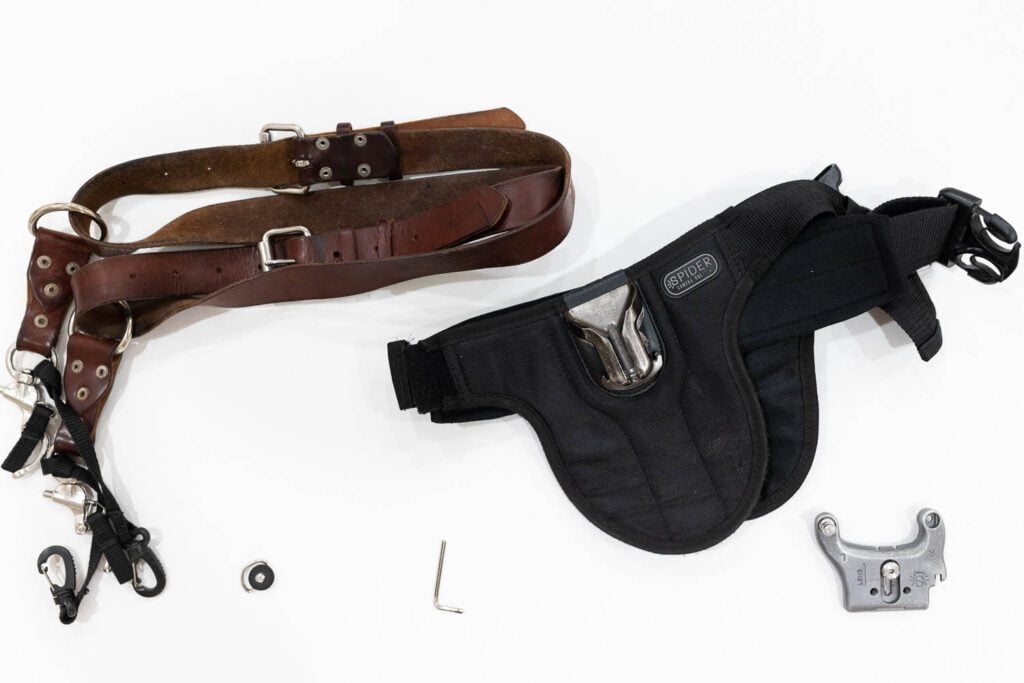
When working as a professional photographer, I often need to carry two heavy cameras. I require my gear to be securely stabilized while I walk (not bouncing in all directions) and easily accessible. There are various systems available for this. In this article, I will compare the two most popular options on the market. My choices are the MoneyMaker (by HoldFast) and the SpiderPro Dual Camera System (version 2 by Spiderholster). Both cost between $250 and $300, which is quite expensive. However, given the price of a camera and lens, it’s important to have a well-designed piece of equipment that can do the job properly. And given the price of each holder, you prefer to be sure of your choice before investing that much money.
I I started using the HoldFast MoneyMaker in 2015, and I was quite happy with it until 2020. However, I began experiencing back pain and started looking for an alternative system to reduce the weight on my shoulders. That’s why I decided to try the SpierPro System (and since I work with two cameras, I chose the Dual System). I will share my personal experience as a wedding photographer. I haven’t tested other systems, so there might be better ones out there. If you know of a better option, please let me know—I’d be interested in discovering it. When I was searching for an alternative system, I was looking for honest reviews to help make my decision. Unfortunately, I couldn’t find any relevant ones. So, I wrote this article in hopes that it will help some of you!
First, I will present each of the systems (in case you don’t know them). Then I will make a list of the pros and the cons going into the details.
Table of Contents
The MoneyMaker by Holdfast
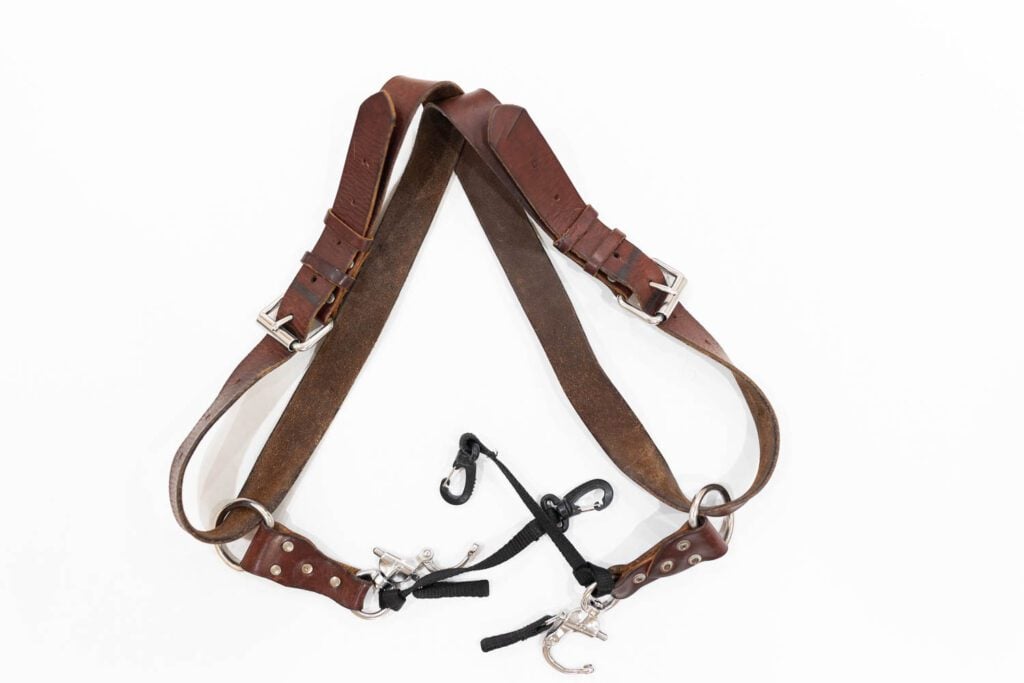
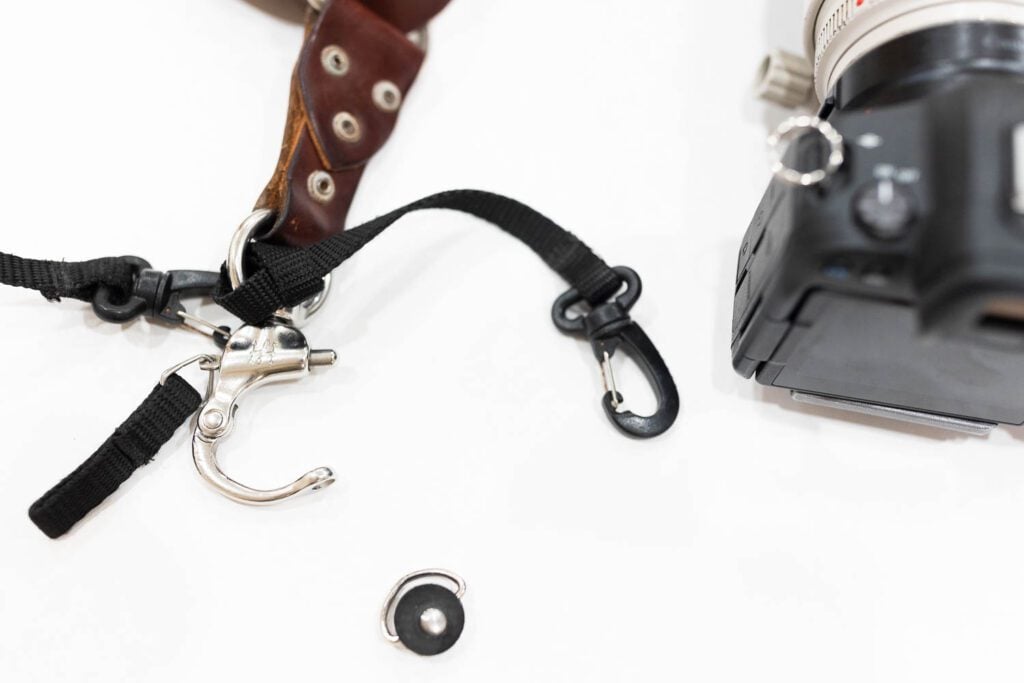
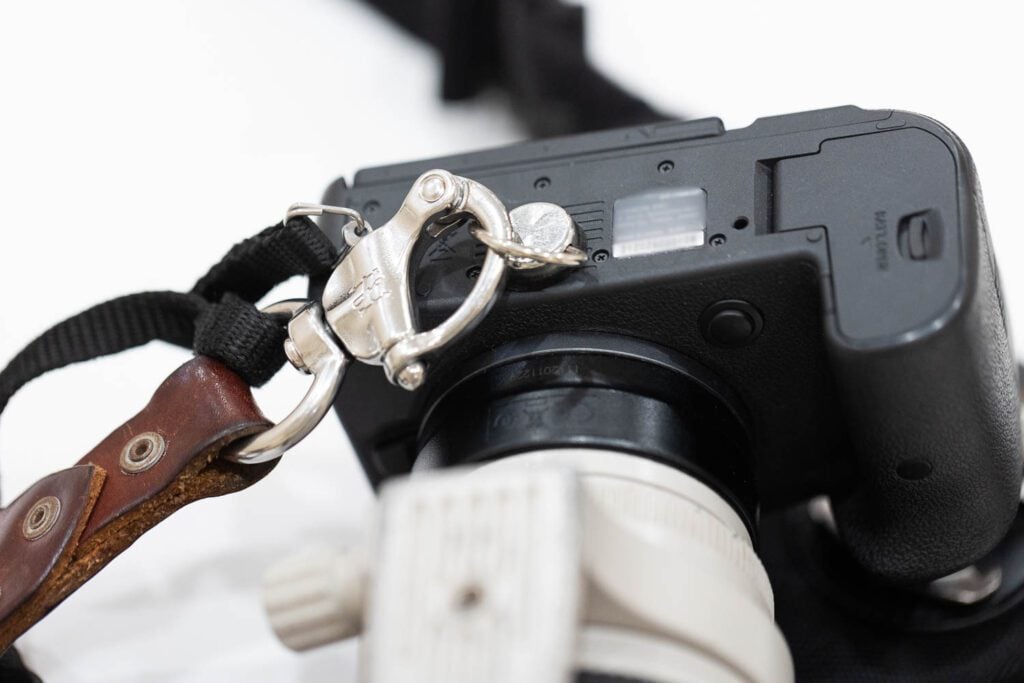
HoldFast is a small company based in Oklahoma, playing the local card of a local craftwork. When you look at their website, it seems to be one guy, build a solid American cowboy quality made to last. Holdfast has designed an entire collection of leather camera holders! They also offer belts and gorgeous bags for photographers.
They chose to alloy noble and durable material (real leather), and a fancy design. Thus, it’s not a surprise if their product became famous during the “Hipster” period. I am especially fond of their leather bags!
Their most popular product is the MoneyMaker. It’s a harness, composed of two leather straps joints on the back of the photographer. Each strap is attached to a steel anchor to secure the camera (and an extra strap for more security). When attached, the camera body hangs alongside the hip. The entire system is pretty simple.
Spider(Pro) Dual Camera System v2 by SpiderHolster
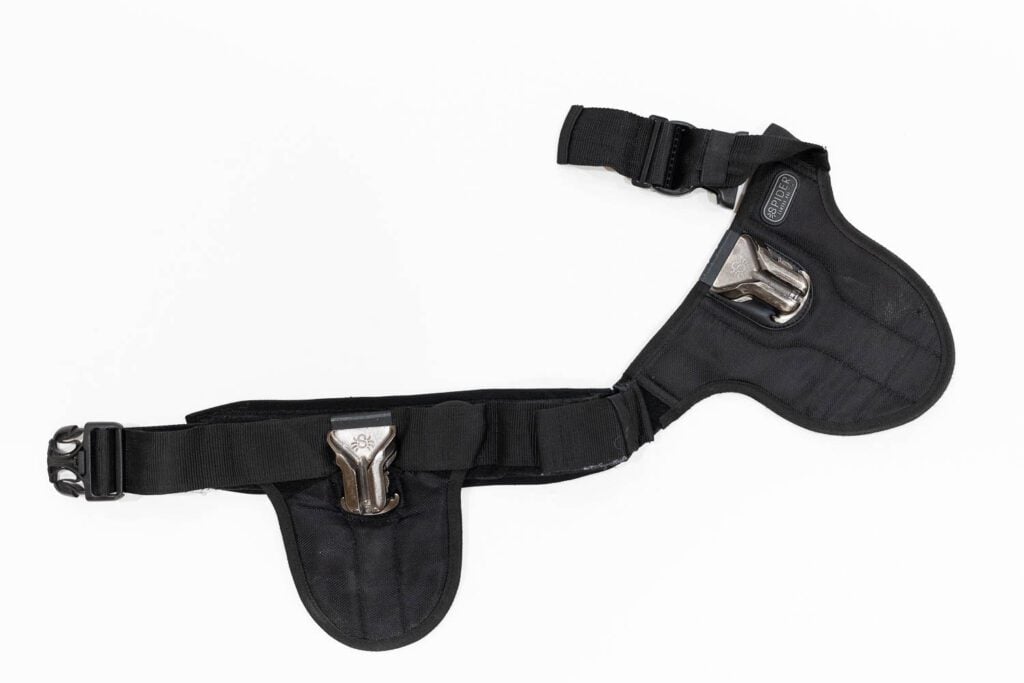
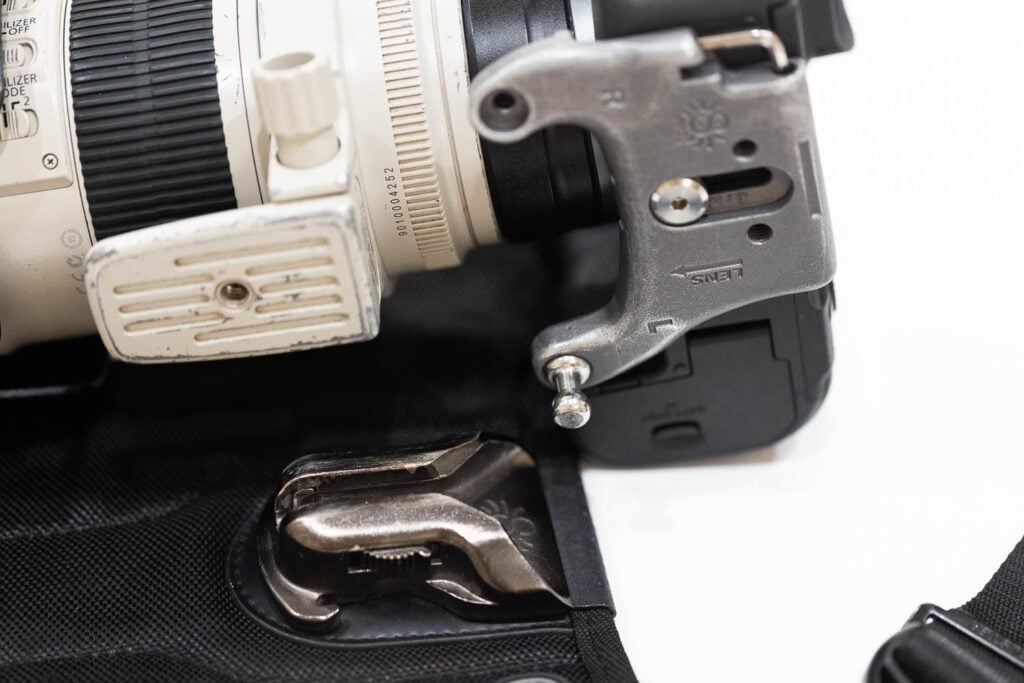
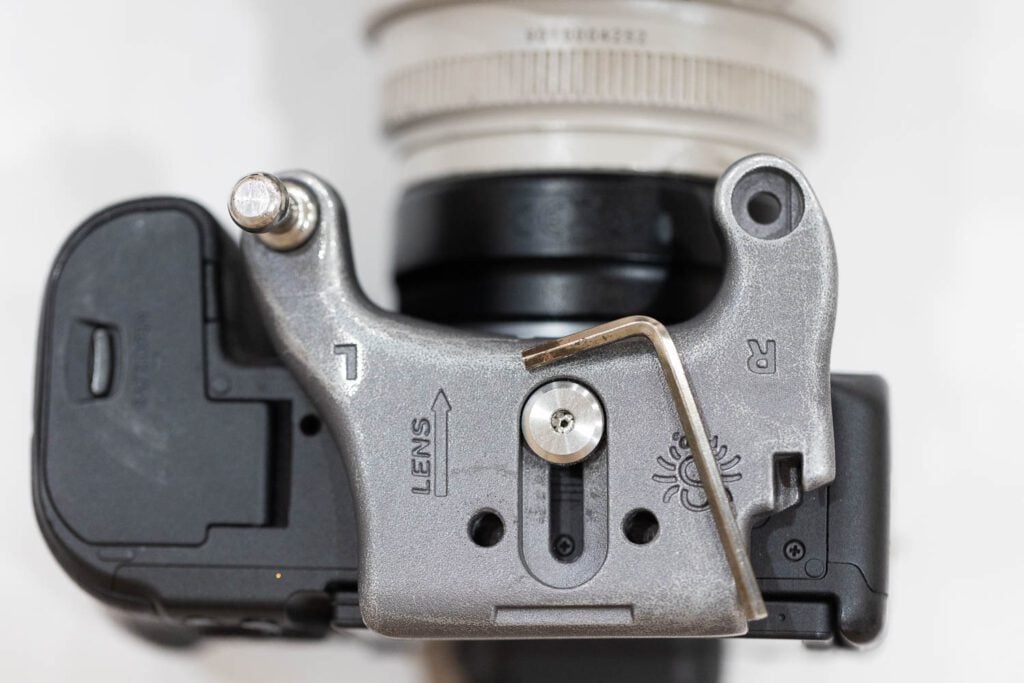
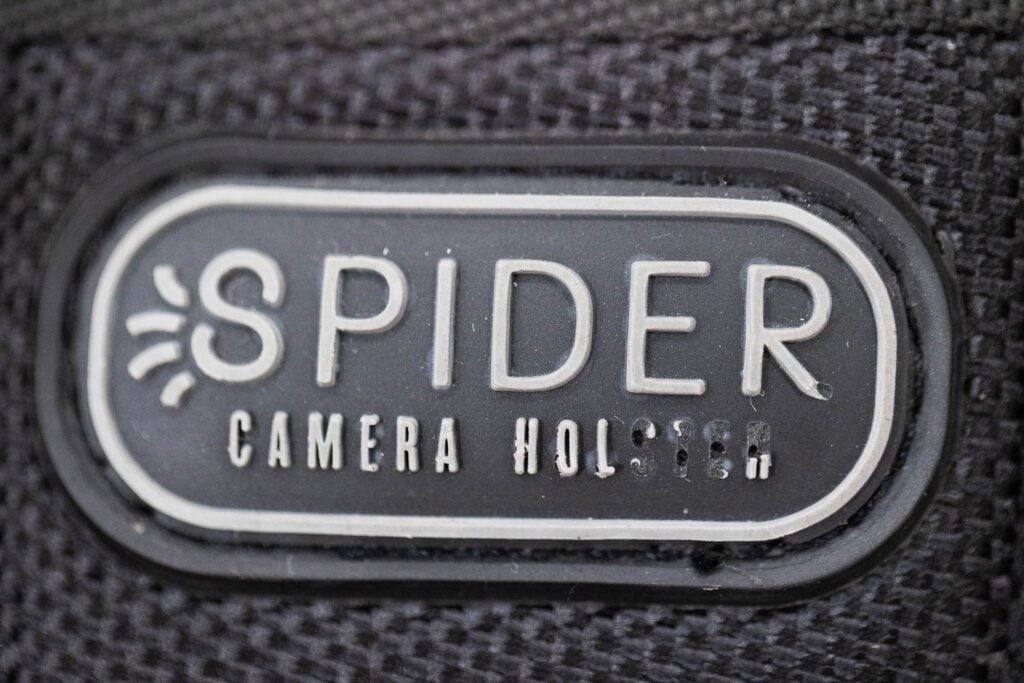
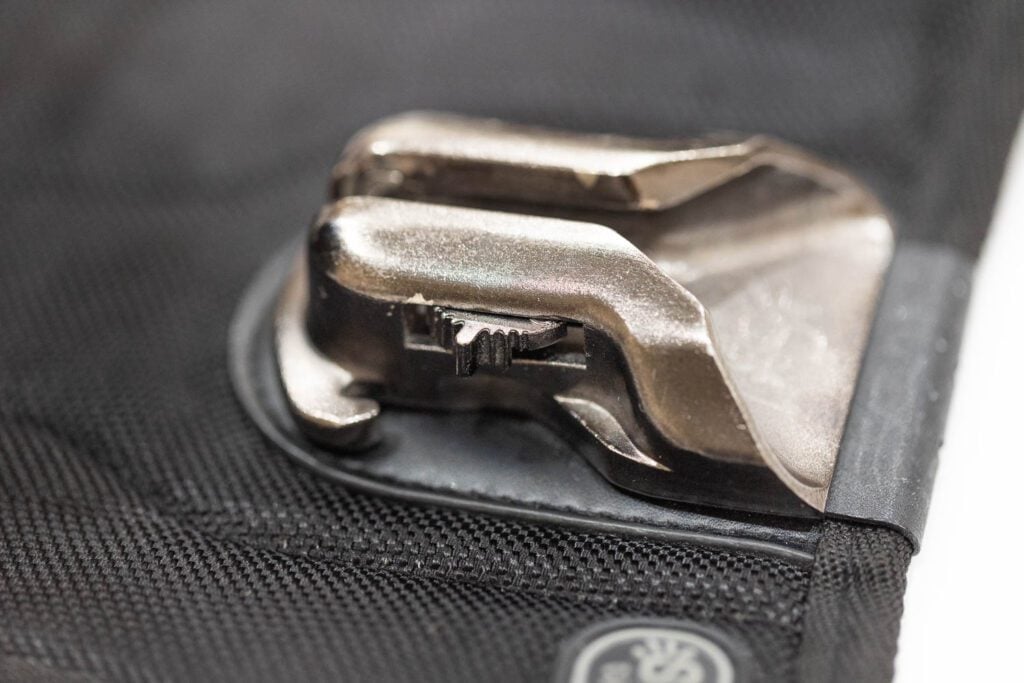
Spiderholster is an American company created by a few photographers. They developed accessories for cameras. Their products range from camera holsters, to belts, to neoprene pouches (perfect for accessories). They focus on the small camera market without forgetting the big ones.
Their storytelling is about researching and developing high quality products. They use higher quality materials and engineering concepts.
The Spider System is made of nylon and velcro belt, on which you can mount their system to attach the camera. The system itself is a plate (female) on which you can clip another plate with a pin (male) attached to the bottom of the camera. They are both made with stainless steel. The female plate features a button that can lock the male plate, and thus prevent the camera from falling down.
When attached, the camera body hangs below the hips, alongside your hip.
The company promises that this system will reduce fatigue and muscle pain.
The pros of the MoneyMaker system
Cameras are accessible to quickly capture memories
I love the way cameras hang alongside my hips. When something suddenly appears, I need to switch the camera. Then I can drop the camera I was holding and immediately grab the second one.
During my wedding photography, that helps me to capture real candid moments. And, those moments, by definition, don’t last long!
Great Distribution of Weight to Carry Heavy Material
The design of the system makes it easy to carry heavy material. Like a hiking backpack, the center of gravity moves inside the body. For instance, I’m used to carrying a Canon 1DX + a 70–200 mm + Flash on one side, and another Canon 1DX + a 24–70 mm + flash.
I would remain balanced and won’t feel (much) the weight (at least during the first hours).
DSLRs remain firmly stabilized in movement
The way the manufacturer designed this holster allows me to run without (too much) difficulty.
A very secure system
The camera is attached by two different systems to the harness.
One piece is attached to the back of the cameras (screw with a ring and clipping system: trigger snap swivel hook).
The other one is a simple clip system attached to the side of the cameras. It uses the ring where the shoulder strap usually goes, with a simpler spring hook.
Light and Foldable
If your photography bag is always full, you will appreciate this harness: it doesn’t take up space. You can squeeze it anywhere in your bag.
Aesthetic Considerations: a combination of style and efficiency
Aesthetics was not my main concern. Still it’s a quality that I appreciate when working every day with my equipment. The leather is a timeless and chic material. It gives an extra touch of style to my outfit.
Very often I receive compliments on it from the guests (which is always pleasant). And last, but not least, it smells pretty good. And given it stays on my shoulders all day long, I smell it all the time!
The Cons
Now let’s go for the nitpicking remarks and try to list all the negative aspects.
Back pain at the end of the day
One of the main advantages of this system is also one of its weak points. Indeed the weight distribution on the shoulder is really good! And that creates a vicious effect: I tend to carry a lot of gear all day long. And this, even if I might not always really need it! As a result, at the end of the day, after 10 hours I have some back pain.
Noisy
There is a kind of event when photographers need to be unnoticed. Wedding ceremonies are part of them. I have noticed that the steel system attached to the bottom of the camera tends to squeak when I move.
That said, even so the sounds remain pretty low. But it’s something to be taken into consideration (especially when you are facing a Catholic priest that doesn’t love photographers much).
The Main Fixation Can Get Loose Once in a While
As we explained previously, the main strap is attached to a ring screwed under the camera body. This screw has a layer of rubber to avoid spinning. But once in a while this screw becomes loose and the fixation comes out.
That’s why there is a second strap that needs to be attached to the camera.
To be honest, thanks to the second strap, I never had any damage issues (just some fear).
Wet Leather and Stains on your clothes
During weddings I usually run in all directions trying to capture everything happening. When the weather is hot, my shirt can easily be completely wet. As a result the leather gets wet too and leaves some stains on my shirt, on the shoulders and under the armpit. Given I was wearing a pretty nice and expensive shirt (I am French), that’s something that bothers me.
Consequently, I have a set of dedicated shirts that I use with this system.
I have contacted the company regarding this question. They invited me to buy their wax, which was supposed to help. While it did indeed help a bit, it didn’t resolve the problem.
Finally, if you shoot several weddings in a weekend, keep in mind wet leather requires time to completely dry. You might feel a bit of discomfort on Sunday morning when wearing the still wet system.
Leather getting old
After five years using this product, the leather started to look old. I take care of it, but it does not help much. It’s like a leather belt that you would wear every day. Sometimes you need to buy a new one. Leather can last long, but not forever if it is used intensively.
Still, while it’s not as beautiful as a brand new one, it remains very nice looking.
The pros of the Spider System
Good weight distribution on the hips
The main reason I bought the Spider Pro system is because I had some back pain. And, after several weddings using it, I have to admit that it did reduce the pain I had.
Indeed, as promised by the company, all the weight goes on the hips. Reducing my back pain, it’s a major and priceless argument for me.
Detail Oriented Product
When you check the details of the product, you can feel that the team spent time working on it. It features a lot of tiny pluses:
Rubber pad on the plate
Camera bumper on the plate (little piece of metal preventing the camera from rotating on the plate)
The Allen wrench to firmly attach the plate to the camera (which has never fallen accidentally).
The button on the female plate with two position locks.
The 3-point release of the belt latch
All those signs give me the feeling that those guys know what they are doing.
You can add an extra pouch on the belt
If you need to carry an extra lens, you can easily buy a neoprene pouch to attach to the belt. Of course, the more lenses you carry the heavier it becomes!
The Nylon resists time and doesn’t get wet
The Nylon resists time, and given its location doesn’t get wet even if the photographer is heavily sweating!
The Cons of the Spider System
Now, let’s make a list of all the negative aspects. You will see that I have found a lot (surprisingly). They are not deal breakers, but must be taken into consideration.
Cameras are not immediately accessible despite their Quick-Draw system
One of the major complaints that I could make about this system is the time required to hang the camera.
Indeed, while it looks pretty easy and fast in their promotional video, in real life it’s not that easy. The company has developed and marketed a quick-draw system. I must admit that taking the camera doesn’t take time. What does, on the other hand, is hanging it back on the belt.
First of all, let’s remember that most people have more ability with one hand than the other one. For instance, I am right-handed, and thus I will more easily hang the camera using my right hand than my left hand. This is especially true when the camera is heavy. As a result, I will lose a considerable amount of time when I try to hang a camera on the left.
The second consideration is the female system (onto which you clip the male pin). Putting the pin in the female plate is not as intuitive as promised. When I try to do it quickly without looking, I usually try several times before succeeding. And, in the end I need to stop what I was doing to carefully look at the system.
To summarize, this Quick-Draw system works great but with a variety of conditions:
if you use it on your dominant hand
if you use only one camera
if you use a light camera (or if you are very strong).
Maybe people get used to it after a while and it becomes something automatic? But for me, after 6 months using it, it’s still not a gesture that has become automatic. Actually, each time I need to switch from one camera to another, I miss the shot… Very frustrating!
The Adjustment for the Location of the Female Plate
Let’s enter the details of the design of the belt and how it impacts the use of the product. The Dual System (as opposed to their Single System) is actually based on a Single-Camera System. It’s a belt with the female plate already fixed that can’t be moved. The Dual System only adds a second System that needs to be attached over the belt. The belt is made with polyester and velcro, and has to be opened to do that. It’s a pretty easy operation.
Thus there is only a small part of the belt where you can add this second system.
For me the second system ends up being located way too far on my waist: almost behind me! As a consequence it’s even more difficult to grab or drop the camera. Should I mention that I am not a large man (I wear size 32). I think it would fit better with larger people.
The Self-Locking System
The female part has a self-locking button. When it’s pushed on, the pin is secured and the camera won’t come out without pressing the button. This feature sounds pretty clever, but in use it might not be as great as that. It’s at the same time a great option and a bad one.
First, let’s mention that the design of the female plate is already well done so the camera won’t jump out. Well, except if you do a front flip on a trampoline, or ride a horse, climb a mountain, etc.!
As a result I always switch this button to the off position, to quickly remove the camera from the holster.
But, I have to admit that it’s a very bad habit that caused me to break one of my lenses when I knelt. Indeed, when you’re kneeling the camera can be pushed by your thigh out of the female plate, and just fall on the ground…Bang! Now, learning from this experience, I am used to it, and pay attention when kneeling.
And still, sometimes, I turn the button on by accident. When that happens I then struggle to grab the camera, needing both of my hands. In such a scenario, I lose a lot of time, which can be very frustrating.
Not Ideal for Heavy Hardware
When used with heavy gear (heavy lens + flashes), the belt tends to slip. This is true even when the belt is tightly attached.
What’s more, even though I don’t feel the weight on my shoulders and my back (which is really great), I still feel the weight on my hips. And given all the weight concentrates on the hips, I actually experience a heavier sensation. That’s especially true when I need to walk or climb stairs.
Not Ideal to Move Through a Crowd
As a thin man, I am used to quickly moving smoothly among the crowd. I can easily pass in the small social distance between people. And if I need to, I would gently touch/push people to make my way.
But, when I have two cameras (+ flashes) on my hips, my waist increases significantly. I become larger, like an elephant. Which means it is not easy anymore to sneak around people in a crowd of guests.
It Takes Up Space in Your Bag
The belt and the system actually take some space, and can’t be folded. Thus you must keep some space in your bag to transport it. It’s not something that you throw on the top of the bag. You need room for it.
Not Practical for Sitting
On the wedding day, I often need to drive. I usually like to keep my holster system attached to me so I don’t waste time.
With the SpiderHolster it’s not possible. Indeed, the system goes below my hips. As a consequence, I need to take it off if I want to drive (again a waste of time).
Not Especially Beautiful
Finally, the last complaint I can find is the beauty of the object. It’s pretty simple and not elegant. It goes over my actual belt, so it’s redundant. What’s more, given it can slip, it sometimes completely messes up my shirt. I can’t tuck it in, and I have to remove everything to fix it (which is as you can imagine pretty annoying).
Summary Table
If you don’t have the time, that’s what you want to know. I have gathered a large variety of points (some important, some less), and compared the product of each manufacturer.
| Qualities | HoldFast | SpiderHolster |
|---|---|---|
| Easy to drop the camera | yes | no |
| Easy to grab the camera | yes | yes |
| Weight location | shoulder | hips |
| Back pain | yes (at the end of the day) | no |
| Easy to move with lot of gear | yes | no |
| Attached to the camera | 2 points | 1 point |
| Great for heavy gear | yes | no |
| Great for light gear | yes | yes |
| Style | leather | black nylon |
| Noisy | a bit | no |
| Great to add an extra pouch | no | yes |
Conclusion: I use both at different moments
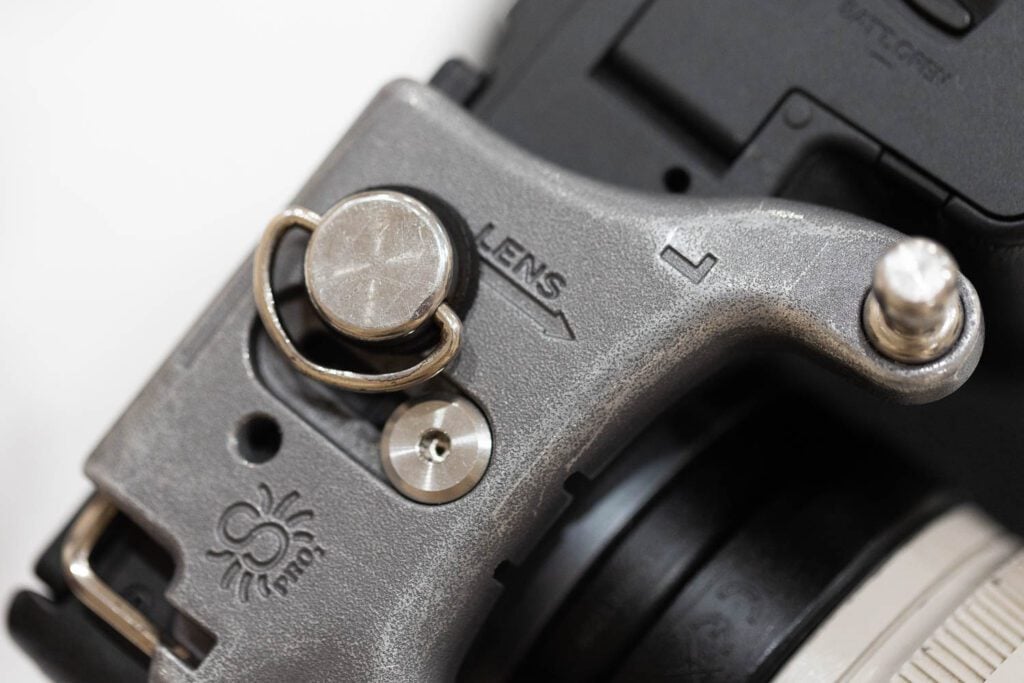
Both systems have their advantages and inconveniences.
If I used lightweight equipment and it didn’t cause back pain, then I would definitely choose MoneyMaker.
But since I do long day coverage with heavy gear, the SpiderPro helps me reduce my back pain. For me, that is an essential advantage that outweighs all the minor negatives.
As a result, I have decided to use both of them depending on the event I am covering. If I work in a calm environment where nothing significant is expected to happen, I would prefer the Spider System with one camera.
But if I know I will be in a rush needing to switch from one camera to another, I would use the Holdfast system. Sometimes, I can even carry one camera with the belt, when using the other camera with a harness.
Price considerations
If you are on a budget, you can be tempted to find a similar, cheaper (Chinese) product on the internet. Indeed, some could consider that $250 for two belts and a clipping system is pretty expensive. And you are right…. And that is another reason the average wedding photographer is expensive!
But living one year in China teaches me one thing: there is always a reason for cheap products. And trust me, you don’t want your camera to fall on the ground because you tried to save a few dollars.
So, it’s a luxurious product, but it is worth it if you are a professional photographer.
2025 Update of the review
I first wrote this article in 2020. Today, in 2025 after 5 years using the SpiderPro Dual Camera System I got completely used to it. I even got rid of my Money Maker. Of course, the cons mentioned in the article remain true. But I have found a workaround. The only real moment during the day when I need to use both cameras with different lenses at a few seconds’ interval is during the kiss at the end of the ceremony. For that, I just kneel in the aisle as usual, with one camera in my hands, and the other one in front of me on the ground. Therefore I can shoot both pictures (wide angle / Tele lens) back to back.
